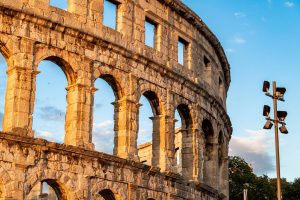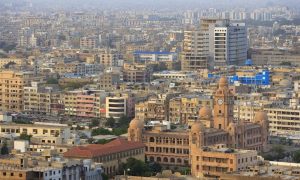
30 interesting facts about Prague
- 👁️ 402
Prague, the capital city of the Czech Republic, is often hailed as one of the most beautiful cities in the world. With its rich history that spans more than a millennium, stunning architecture, and vibrant cultural scene, it’s no wonder that Prague has become a must-visit destination for travelers from around the globe. From the iconic Charles Bridge to the historic Prague Castle, the city offers a plethora of sights and experiences that captivate the imagination of its visitors. Beyond its well-known landmarks, Prague’s charm lies in its detailed intricacies – the quaint cobbled streets, the unique blend of architectural styles, and its tales of legends and lore. Let’s explore some fascinating and informative facts about Prague that showcase the city’s unique character and historical significance.
- Prague was founded in the 9th century and has served as the capital of the Czech state for over a thousand years.
- The city was untouched by World War II bombs, leaving much of its historic architecture intact.
- Prague Castle is recognized by the Guinness Book of Records as the largest ancient castle complex in the world.
- The Charles Bridge, one of Prague’s most famous landmarks, was completed in the 15th century and is adorned with 30 statues and statuaries.
- The Astronomical Clock located in the Old Town Square is the third-oldest astronomical clock in the world and the oldest one still operating.
- Prague is home to the largest nightclub in Central Europe, Karlovy Lázně, which has five floors.
- The city’s historic center is a UNESCO World Heritage site, encompassing the Old Town, New Town, Lesser Town, and Prague Castle.
- The Vltava River, the longest river within the Czech Republic, runs through the heart of Prague.
- Prague’s nickname, “The City of a Hundred Spires,” is based on its abundance of historical buildings crowned with spires.
- The Petřín Lookout Tower, resembling a small Eiffel Tower, was built in 1891 and offers panoramic views of the city.
- The National Museum in Prague is the oldest museum in the Czech Republic, established in 1818.
- The Lennon Wall, once a normal wall, has been filled with John Lennon-inspired graffiti and lyrics since the 1980s as a symbol of peace and love.
- The Velvet Revolution, leading to the end of Communist rule in Czechoslovakia, took place in Prague in 1989.
- The city’s metro system, opened in 1974, is one of the busiest in Europe, transporting over 1.6 million passengers daily.
- The famous writer Franz Kafka was born in Prague in 1883 and the city features several memorials and museums dedicated to him.
- The oldest university in Central Europe, Charles University, was founded in Prague in 1348 by Charles IV.
- Beer is a significant part of Czech culture, and Prague is known for having some of the best and cheapest beer in Europe.
- The Dancing House, an example of deconstructivist architecture, represents a dancing couple and is one of Prague’s most modern landmarks.
- Prague Zoo, opened in 1931, is considered one of the best zoos in the world.
- The city has a unique museum dedicated to alchemy, located in a building where alchemists from the time of Rudolf II were thought to have lived.
- St. Vitus Cathedral, located within Prague Castle, took nearly 600 years to complete, with construction starting in the 14th century and finishing in the 20th century.
- The Vyšehrad fortress, according to legend, was the first seat of Czech princes and the mythical Princess Libuše who prophesied the glory of Prague.
- Prague’s Jewish Quarter, known as Josefov, is home to the oldest active synagogue in Europe, the Old-New Synagogue, dating back to the 13th century.
- The city played a major role in the Bohemian Reformation and was the main center for Jan Hus and his followers in the early 15th century.
- Prague features several parks and gardens, including the Petřín Gardens, Stromovka, and Letná Park, offering green spaces and scenic views.
- The famous Czech composer Antonín Dvořák was born near Prague, and the city’s main concert hall, the Rudolfinum, is named in honor of Rudolf, Crown Prince of Austria.
- Prague was the capital of the Holy Roman Empire under Charles IV in the 14th century.
- The city’s unique Cubist architecture, from the early 20th century, can be seen in buildings like the House of the Black Madonna.
- Prague’s Old New Synagogue is the oldest active synagogue in Europe and one of Prague’s earliest Gothic buildings.
- The Barrandov Studios, established in the 1930s, are often referred to as the “Hollywood of the East” due to their significance in the European film industry.
Prague’s rich tapestry of history, culture, and architecture makes it a fascinating city to explore. From its ancient origins to its role in modern European history, Prague has continually evolved while preserving its heritage and beauty. Whether it’s the historic Prague Castle, the charming streets of the Old Town, or the city’s contribution to literature, music, and art, Prague offers a unique and unforgettable experience. Its blend of the past and present, tradition and innovation, ensures that Prague remains one of the most intriguing cities in the world.











